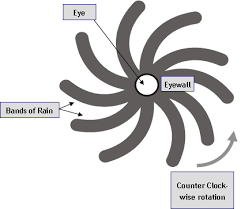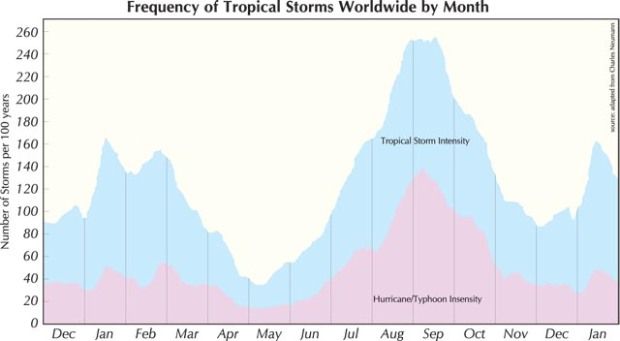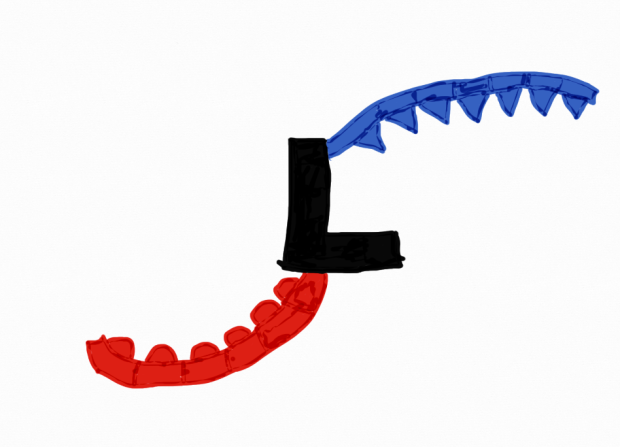Hurricanes and Tropical Storms affect the Atlantic and Pacific Oceans, and there are a lot of science behind these destructive storms. So I am going to tell you about Hurricanes.
- How Hurricanes Form
- Structure of Hurricanes
- Hurricane Names
- Saffir Scale
- Hurricane Season
- Other
How Hurricanes Form
All hurricanes start out as unorganized showers and clouds as a low pressure system called a tropical disturbance. If the disturbance gets energy from the warm waters of the ocean it becomes a tropical depression, as there is more organization and even an eye if you look at imagery. If the tropical depression gets even more energy from the warm waters and the winds are above 40MPH it becomes a Tropical Storm. if it continues to strengthen and get more and more heat and the winds become over 74MPH it becomes a hurricane. The fuel of these storms is warm water, and that is why when the storm is over land gets weaker since there is no warm water.
Structure of Hurricanes.

Tropical Storms and Hurricanes are very organized, and they have specific features of the storms. The first one is the bands, these bands are packed with wind and rain. In between bands you can experience a low in the wind and rain, and then the next band comes alone and as each band comes as the storm makes landfall the wind and rain get even worse. A lot of people know of the eye, and this is where the lowest pressure of the storm is located. If you are right under the eye, you can experience a clear blue sky with no wind. Most people think going into eye is cool since you might get the clear sky, but it is very dangerous. The eye wall is the strongest part of the storm, where the wind is the worst. It is the most dangerous part of the storm, and some people think that the clear blue sky means the storm is over, but soon the storm will come back with the eye wall and will bring the worst part of the storm again.
Hurricane Names
Why do Hurricanes have names. Before modern technology they didn’t have radar or satellite images so they can’t warm people beforehand. As we got the radar developed, and the satellites in the sky forecasters were able to see the storms. There was a problem though, if there were more than one storm it was hard to understand one meteorologist when he was talking about one hurricane, while the other thinks he is talking about another storm. In 1950 they started to give them names, so the confusion stopped and that improved forecasts because everyone knows which storm they were referring too. Some storm names get retired after they cause major damage and death. Katrina is one of the storm names that got retired. Most storm names that are retired are historic, mostly because of the mass amount of death and destruction.
Tropical depressions do NOT get names. Since there is a limited amount of names they don’t want to waste a name on a tropical depression. Tropical depressions are referred to the number of storms so far, like tropical depression ONE or tropical depression SEVEN
There is a preset of names for each year, each list has 21 names and it goes boy girl boy or girl boy girl. Only once did they ran out of names, and that was in the 2005 Hurricane season and they had to go to the greek alphabet. That season was off the charts.
Saffir Scale
The Saffir-Simpson Scale helps us to understand how strong a storm is. This helps emergency officials issue mandatory evacuations and prepare for the storm.
- Tropical Depression:Under 40MPH
- Tropical Storm:40-74MPH
- Category 1: 75-95MPH
- Category 2: 96-110MPH
- Category 3: 111-129MPH
- Category 4: 130-156MPH
- Category 5: 157MPH+
Category 3 and above is considered a major hurricane since they can topple homes, knock down trees and the hazards get upgraded because of down power lines, people getting hit by heavy debris.
Hurricane Season

*This chart includes all tropical storms, typhoons, super typhoons ect..*
The Hurricane season for the Atlantic Ocean starts on June 1st and ends November 30th. It is not uncommon for storms to form in the Atlantic ocean in April or May. At any other time, it is very uncommon. In mid January of 2016 a sub tropical and then tropical storm Alex formed. Very unusual.
Other
I mentioned about a subtropical storm in the last segment. Subtropical storms are different than their tropical storm cousins. Subtropical storm does not use the warm water of the ocean, so subtropical storms are the most common out of season storms to develop. They use the heat inside the atmosphere to fuel it, and it’s winds are spread out throughout the whole storm, and the strongest winds are not located in the center it is all over. Most of these storms become tropical storms. When it comes to the naming it is the same, but if the subtropical storm has winds above 74 MPH it is not called a hurricane it is called a subtropical storm.
There is something called an extratropical cyclone, these cyclones forms over land. 
I am sure you have seen this image before, on the news or on maps. This is an extratropical cyclone, the low pressure system is connected by fronts.